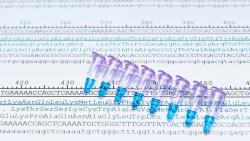
CONTINUE TO SITE
OR WAIT null SECS
Advertisement
- About Us
- Advertise
- Editorial Information
- Contact Us
- Do Not Sell My Personal Information
- Privacy Policy
- Terms and Conditions
© 2024 MJH Life Sciences™ and BioPharm International. All rights reserved.
Innovations from Thermo Fisher Scientific Advance Electron Microscopy and Microanalysis
The company’s new electron microscopy and microanalysis solutions offer scientists enhanced research capabilities.
Thermo Fisher Scientific added the following products to its portfolio of electron microscopy and microanalysis solutions:
- The Phenom Pharos microscope is the first desktop scanning electron microscope (SEM) solution from the company that includes a field emission gun. According to the company, the microscope is easy to operate and incorporates an advanced hardware design that enables fast time-to-image and easy handling.
Advertisement
- The Lumis electron backscatter diffraction (EBSD) detector is used in SEM to study crystalline and polycrystalline materials, and allows material scientists, metallurgists and geoscientists to understand the structure, crystal orientation and phase of SEM samples and monitor structural transformations in samples.
- The Themis Z scanning transmission electron microscope (STEM) builds on its sub-Angstrom STEM imaging capability with S-CORR, the next generation in probe aberration correction. With S-CORR, the Themis Z microscope is designed to deliver enhanced STEM imaging and spectroscopy performance at low accelerating voltages, allowing scientists to analyze materials such as batteries, fuel cells, catalysts and lightweight metals and alloys that have historically been difficult to image.
- Thermo Fisher states that by improving the probe size and shape while preserving sample integrity during investigation, researchers can better understand how to improve the performance of materials by revealing their structure and chemistry at the atomic level.
Product advancements accelerate scientific research
In addition to introducing several new solutions, the company has made advancements in its existing portfolio of instruments, workflows, and applications:
- The STEM Maps and EDS Maps software now include performance increases and connection to energy-dispersive X-ray spectroscopy (EDS), allowing users to complement high resolution imaging performance and elemental information from large areas across multiple imaging platforms.
- The updated HeliScan microCT provides improved resolutions down to 400 nanometers, enabling materials science researchers to gain a better understanding of their samples, according to the company.
- Cryo-electron microscopy single particle analysis (cryo-EM SPA) offers increased automation, simplified alignments, and optical enhancements for cryo-TEMs, which includes a free online cryo-EM school platform in collaboration with Professor Grant Jensen, California Institute of Technology, Pasadena, CA.
- The new Cryo-EM tomography workflow integrates light microscopes from Leica with cryo-electron microscopes from Thermo Fisher for rapid and improved insight into the mechanisms of diseases.
- The company has extended its DualBeam-focused ion beam scanning electron microscopes (FIB-SEMs) with automation software that enable high-quality sample preparation for users of all experience levels in a short amount of time. It also now includes advanced 3D materials characterization and a Python-based scripting engine to automate experiments. Additionally, the company added plasma FIB-SEM DualBeams to broaden the length-scale and increase throughput, as well a multiple-species source to broaden the applications space.
These innovations were showcased at the Microscopy and Microanalysis 2018 Meeting at the Baltimore Convention Center in Baltimore, MD on Aug. 5–9, 2018.
Source: Thermo Fisher Scientific



